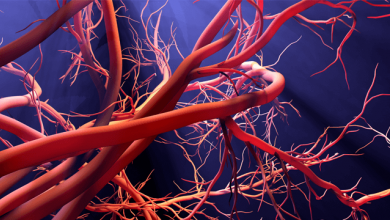Search results
Author(s):
Roos ET van der Meer
,
Angela Maas
Added:
2 years ago
Author(s):
Haider Aldiwani
,
Suzan Mahdai
,
Ghaith Alhatemi
,
et al
Added:
2 years ago
Author(s):
Martha Gulati
,
Cara Hendry
,
Biljana Parapid
,
et al
Added:
2 years ago
Author(s):
Kensuke Nishimiya
,
Jun Takahashi
,
Kazuma Oyama
,
et al
Added:
10 months ago
Author(s):
Marie Mide Michelsen
,
Naja Dam Mygind
,
Daria Frestad
,
et al
Added:
3 years ago
Women have for many years been regarded as being at relatively low risk for the development of ischaemic heart disease (IHD).1,2 Recently this pattern has changed and cardiovascular disease (CVD) is now the leading cause of death for women in Europe.3,4 Under the age of 60 years acute coronary syndrome occurs 3–4 times more often in men; however, after the age of 75 years women represent the…
View more
Author(s):
Gaetano Antonio Lanza
Added:
3 years ago
Up to 50% of patients who undergo elective coronary angiography for stable chest pain symptoms that are mainly related to exercise and typical enough to suggest the presence of obstructive coronary artery disease (CAD) are found to have normal or near-normal coronary arteries.1 The mechanisms responsible for angina chest pain in these patients are heterogeneous; accordingly, their identification…
View more
Author(s):
Michalis Kolentinis
,
Melanie Le
,
Eike Nagel
,
et al
Added:
3 years ago
Ischaemic heart disease (IHD) is the leading cause of morbidity and mortality worldwide. Two major pathways of disease development are acute coronary syndrome (ACS) and stable chronic angina.1,2 The success of prevention measures and early treatment pathways in ACS has helped to reduce the heart failure (HF) burden due to post-infarction remodelling and systolic dysfunction. However, accurately…
View more
Author(s):
Alda Huqi
,
Giacinta Guarini
,
Doralisa Morrone
,
et al
Added:
3 years ago
Myocardial revascularisation in patients with stable chronic angina is performed with the aim of reducing cardiovascular death, reducing myocardial infarction (MI) and relieving angina symptoms. However, contrary to expectations, modern therapy with percutaneous coronary intervention (PCI) has not had a significant impact on hard outcomes.1–5 Indeed, as also summarised in a recently published…
View more
Author(s):
Gaetano Antonio Lanza
,
Hiroaki Shimokawa
Added:
11 months ago
Author(s):
Sivabaskari Pasupathy
,
Rosanna Tavella
,
Simon McRae
,
et al
Added:
3 years ago
Early coronary angiography performed during acute MI (AMI) identifies an occluded vessel in most patients with ST elevation MI (STEMI)1 and less frequently in those with non-STEMI;2 however, ≥90 % of patients with AMI have evidence of obstructive coronary artery disease.3 For these patients with overt coronary artery disease (CAD), the benefits of reperfusion strategies and cardioprotective…
View more
















